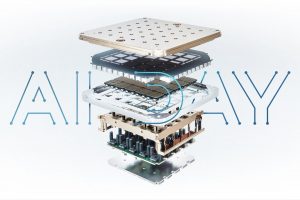Volkswagen and the Hellenic Republic of Astypalea have decided to take on the rigorous task of electrifying the Greek island’s entire transportation fleet. Volkswagen and the local government of Astypalea island want to gradually convert to electric vehicle fleets, digital mobility solutions, and green energy.
Volkswagen calls the island of Astypalea a future laboratory for smart, sustainable mobility. The German Automaker and the local government of Astypalea aim to electrify cars and scooters on the island. In addition, the pair plans to build a 3 MW solar part to supply clean energy to electric vehicles by 2024.
The island in the Aegean Sea already started work on its transformation. Most new cars registered in Astypalea are fully electric vehicles, and 25% of the island’s inhabitants regularly use the ASTYBUS ridesharing service.
Volkswagen’s electric vehicles, like the ID.Buzz, e-scooters from SEAT MÓ, and e-bikes from Ducati make up the ASTYBUS fleet, which has replaced the Greek island’s bus line.
“Over the next two decades, we will see many of the changes that make up the Astypalea project in other regions of Europe as well. Particularly impressive is the people’s change in mood from initial skepticism to great approval. This shows that rapid transformation is possible if companies, politicians, and society work together,” said Mark Stephan, Volkswagen Group’s Head of Business Development.
Now that electric mobility is gaining support, Volkswagen and Astypalea plan to tackle the island’s energy system next. The project aims to slowly transition the island to using locally-produced renewable energy. Astypalea Island has existing smaller solar plants, providing green energy to the local electric fleet. VW and the local government plan to construct a hybrid power system or solar park consisting of 3.5 MW and a battery storage system.
The planned hybrid power system will provide 100% of the energy necessary to support electric vehicles and other electrified transportation. It is also expected to provide 60% of the island’s general energy needs. The project is expected to expand the energy system further by 2026 to cover 80% of the island’s total energy demand.





